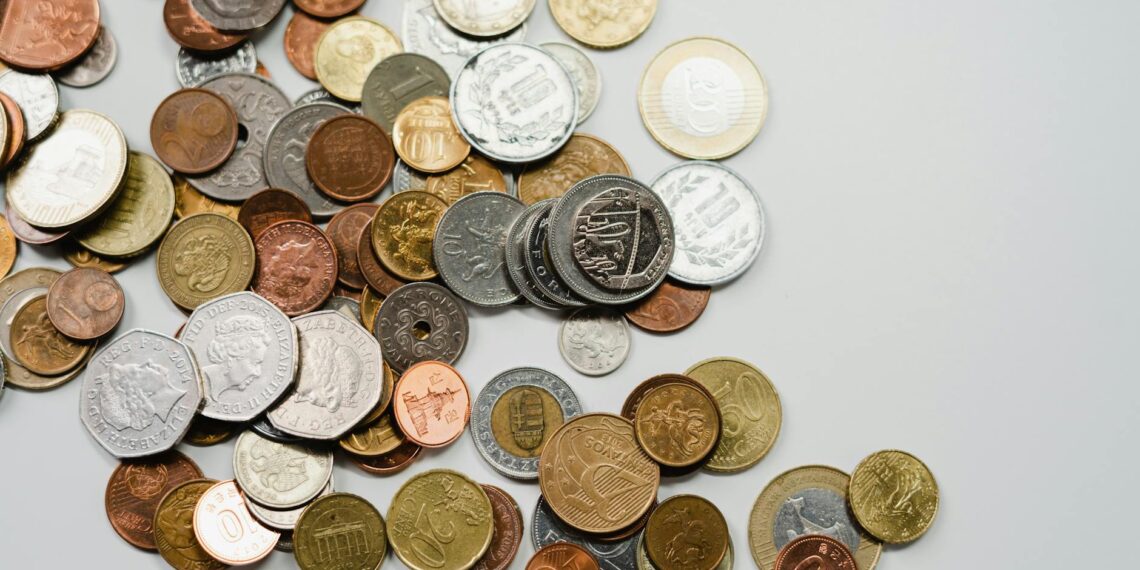Several factors can make a dollar coin rare and valuable to collectors.
- Low Mintage: Coins produced in limited quantities are generally more desirable and therefore more valuable.
- Errors: Minting errors, such as double strikes, off-center striking, or missing or incorrect edge lettering, can significantly increase a coin’s rarity and value.
- Condition: Well-preserved coins in good condition with sharp details and free from damage will fetch a higher price than worn or damaged examples.
- Historical Significance: Coins associated with significant events, periods, or figures in history are also highly sought after.
Here are some examples of rare and valuable US dollar coins:
- [1794 Flowing Hair Silver Dollar]: This was the first dollar coin produced by the US Mint, making it historically significant. Its rarity and historical importance make it incredibly valuable, with some examples selling for millions of dollars.
- [1804 Draped Bust Silver Dollar]: Known as the “King of American Coins,” this dollar coin was actually minted in 1834 for diplomatic gifts. Due to its limited mintage and unauthorized copies made later, it is extremely rare and valuable.
- [1885 Trade Dollar]: Trade dollars were primarily intended for trade with Asia. Only five 1885 Trade Dollars are known to exist, making this year exceptionally rare and valuable. An example sold for nearly $4 million.
- [1893-S Morgan Silver Dollar]: Only 100,000 of these silver dollars were minted, making them the rarest Morgan dollar. They are highly valuable and sought after by collectors.
- [2000-P Sacagawea Cheerios Dollar]: These special edition Sacagawea dollars were distributed in Cheerios boxes and are identifiable by unique detailing on the eagle’s tail feathers. They can be worth thousands of dollars, depending on their condition.
- [2000-D Sacagawea South Carolina Quarter Mule]: A unique error coin where the reverse of a Sacagawea dollar was accidentally struck with a South Carolina state quarter die, creating a valuable one-of-a-kind piece.
- [2007 Missing Edge Presidential Dollars (John Adams, Thomas Jefferson)]: These error coins lack the typical edge lettering that includes the date, mintmark, and mottos. They are considered valuable due to this manufacturing flaw.
- [1979-P Susan B. Anthony Dollar (Wide Rim)]: A rarer variety of the Susan B. Anthony dollar, distinguished by a wider rim compared to the more common narrow-rimmed version. It is important to note that most Sacagawea and Susan B. Anthony dollars are only worth face value, but these specific varieties are an exception.
- [
1794 Flowing Hair Dollar Uncertified Ungraded No Mark $38.99]
- [
Coins 1804 Draped Bust Dollar American Dollar Collectibles US Commemorative Coins Old Coins Perfect For Gifts Antique Coins To Collect $28.17 $56.35 3.4 (5)]
- [
1885 Ngc Pr64 Star For Eye Appeal $2.4 Million Trade Dollar Seated $831.00]
- [
1893-S Morgan Silver Dollar NEARLY UNCIRCULATED]
- [
Rare Cheerios 2000 P Sacagawea Dollar Coin (very Good Condition)$2,000.00]
- [
2000 D South Carolina State Quarter 25c Pcgs Ms68 $94.99]
- [
2007-P John Adams Presidential Dollar Missing Edge Lettering MS64 $199.95]
- [
1979-P Susan B. Anthony Dollar Wide Rim Variety $13.95]
See more
- Examine the Date: Older coins, especially those from the 18th and 19th centuries, are more likely to be rare.
- Look for Errors: Check for anomalies like missing or incorrect edge lettering, off-center striking, or double strikes.
- Research Mintage Figures: Consult reputable numismatic resources or online databases to check the mintage numbers for your coin’s year and mint mark. Lower mintage numbers generally indicate a rarer coin.
- Evaluate Condition: Assess the coin’s condition, looking for sharp details, original luster, and any damage or wear. Well-preserved coins are more valuable.
- Consult Experts: If you’re unsure about a coin’s rarity or value, seek advice from experienced numismatists or a trusted rare coin dealer.
Finding valuable dollar coins in circulation is rare, but not impossible. However, the rarest and most valuable coins are typically not found in pocket change due to wear and tear from circulation.
Disclaimer: The information provided here is for informational purposes only and is not intended as financial or investment advice. The value of coins can fluctuate significantly based on market conditions, rarity, condition, and other factors. It is essential to consult with a qualified numismatic expert or financial advisor for personalized guidance.









Which $1 coin is rare?
Among them, the 1884 and 1885 Trade Dollar coins are exceptionally rare, with only ten and five known to exist, respectively. In fact, in 2006, one 1884 Trade Dollar was auctioned for a staggering $3.3 million! But even more common dates of these dollar coins can be worth a lot of money, especially in higher grades.
How to tell if a $1 coin is worth money?
From my experience, U.S. dollar coins worth money are hard to identify at a glance. Their value lies in where they were minted, their historical significance, mintage, precious metal content, whether they are error coins, and their condition. Understanding this is critical if you are thinking of selling your dollar coins.
What coin is worth $1,000,000?
Good point! 1943 Bronze Lincoln Penny. Now we’re getting into some serious money. The 1943 Bronze Lincoln penny has gone for hundreds of thousands of dollars, but it could go for as much as $1 million in perfect shape, according to Urban Aunty — as long as it’s missing a mint mark (and thus from Philadelphia).